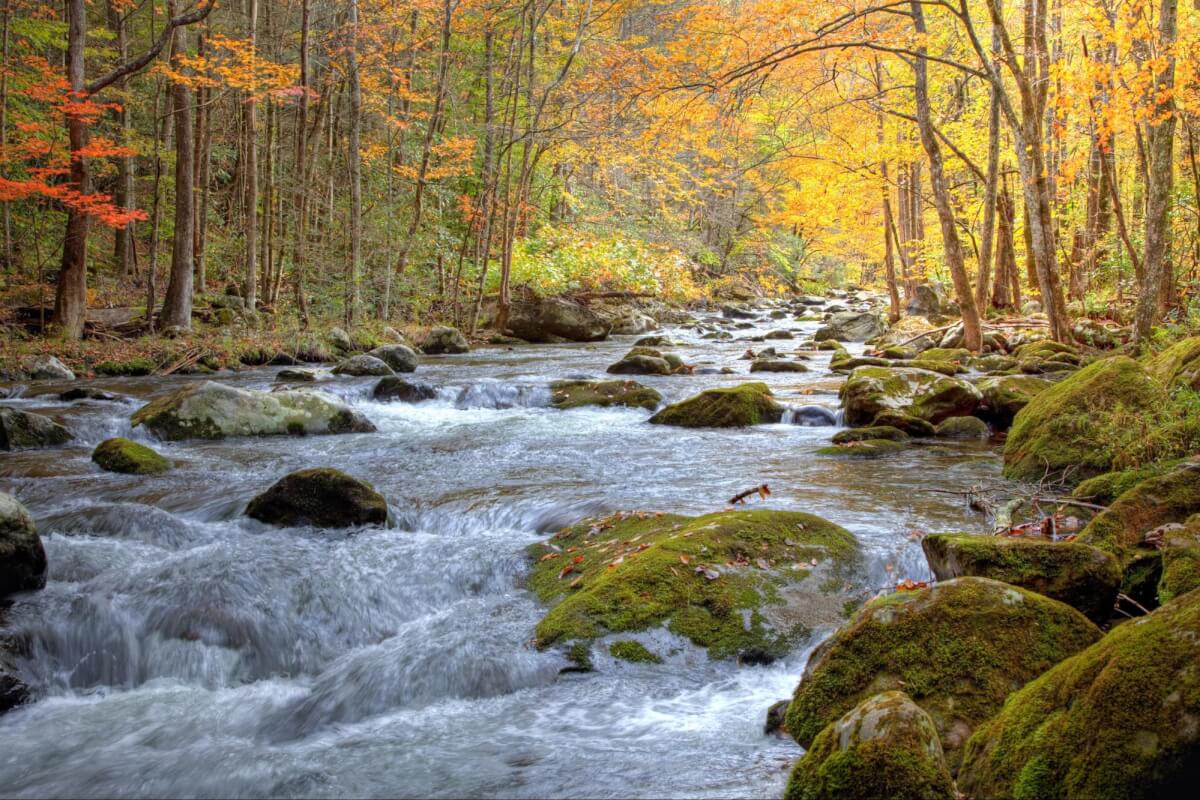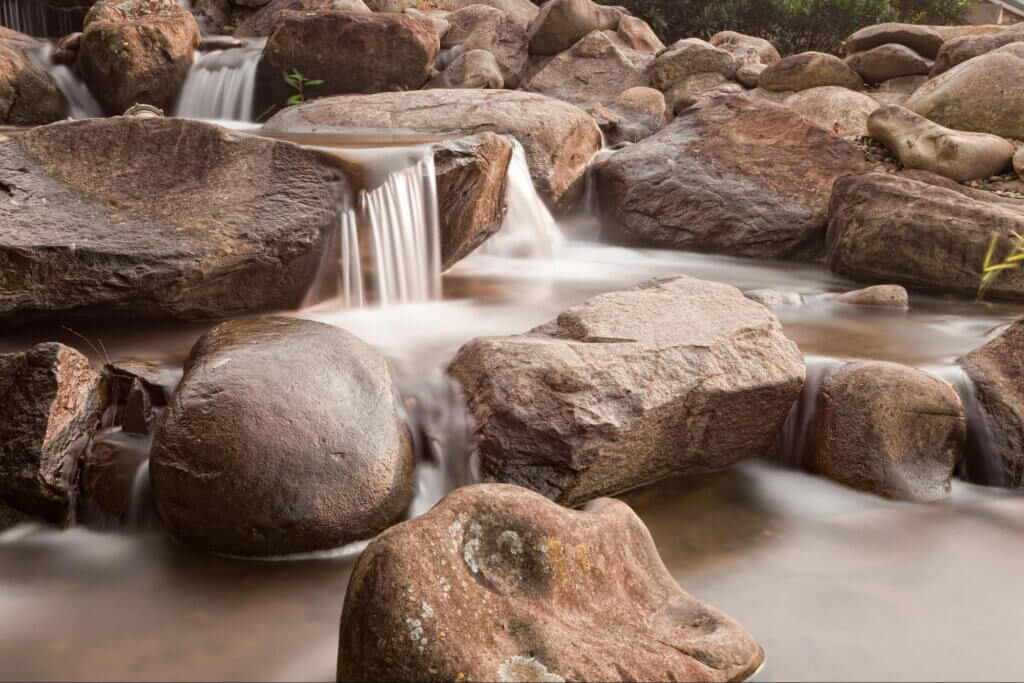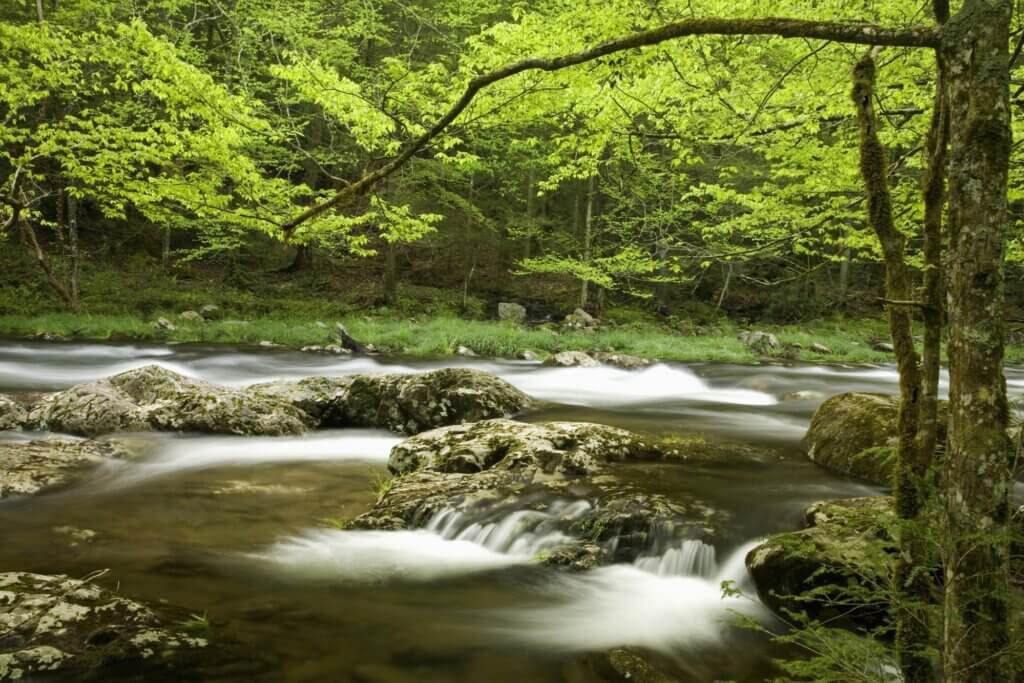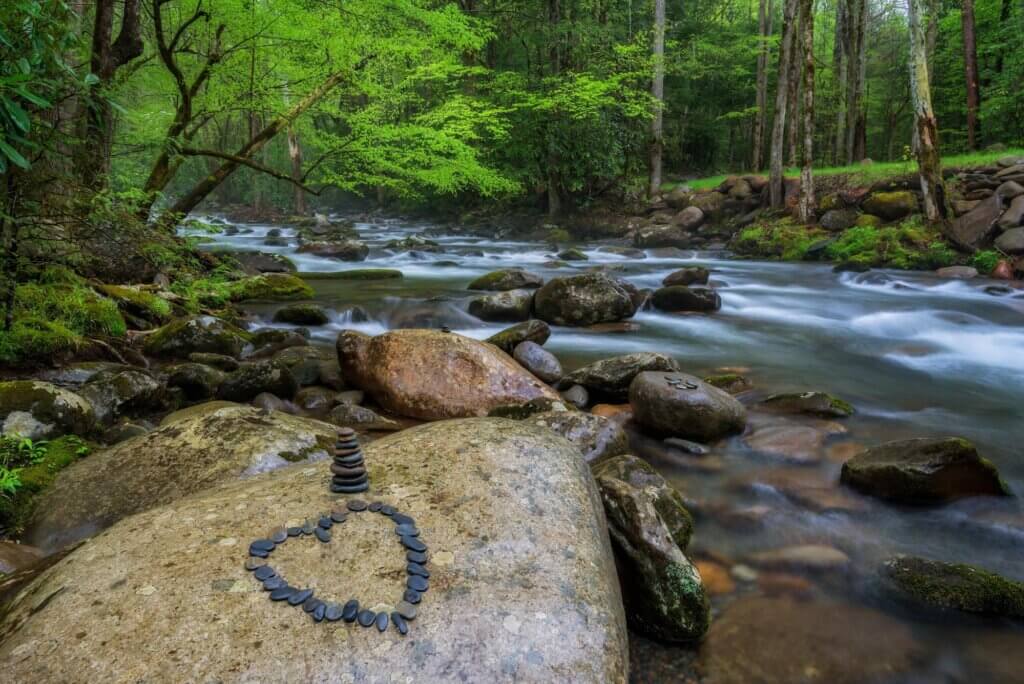FAQ About The Little Pigeon River

Eastern Tennessee is full of gorgeous mountain rivers and streams. However, it can be daunting to navigate them all and know which ones are best suited to which activities. Plus, the only information available online is limited and scattered, which might not help if you’re new to the area. Come with us on a virtual tour of the Great Smoky Mountains rivers, where we’ll answer some frequently asked questions.

Pigeon River, Little River, Little Pigeon River: Oh My!
Whoever was in charge of naming the Great Smoky Mountains rivers must have wanted to make things as confusing as possible! After all, they have very similar names. First, let’s differentiate between the three major rivers in the Smoky Mountains area.
- Pigeon River – The Pigeon River meanders north from the Blue Ridge Mountains of Western North Carolina to Bluffton and Wilton Springs, TN. Finally, it flows into the French Broad River near the east side of Douglas Lake between Bybee and Newport, TN. Named after the extinct passenger pigeon once native to the area, the Pigeon River is today best known for Class I, II, III, and IV rapids that make for excellent whitewater rafting.
- Little River – The Little River arises from the Great Smoky Mountains National Park, skirting Clingman’s Dome and traveling north through Townsend, TN, until meeting the Tennessee River just south of Knoxville. The Little River is most popular for river tubing in Townsend, picnicking in Metcalf Bottoms, and hiking from Little River Road to see waterfalls.
- Little Pigeon River – With the Pigeon River to the northeast and the Little River to the southwest, the Little Pigeon River cuts through the land in-between the other two. Streams from the Great Smoky Mountains converge to form a gentle river running through Gatlinburg, Pigeon Forge, and Sevierville until it empties into the French Broad to the west of Douglas Lake. The Little Pigeon River is great for fishing, swimming, floating, and viewing from the Pigeon Forge Riverwalk.

What Are the Prongs of the Little Pigeon River?
The Little Pigeon River divides itself into three major branches: East, Middle, and West. The West Prong Little Pigeon River is the most notable because it flows through Gatlinburg, Pigeon Forge, and Sevierville. Most of the waterfront activities you’ll find are on the West Prong Little Pigeon River.

What Is There To Do On the River?
There is certainly no shortage of things to do on all of these rivers. However, because it flows through Pigeon Forge and Gatlinburg, we’ll focus on the Little Pigeon River. These are some of the best ways to relax and play by the water.

Little Pigeon River Fishing
The West Prong Little Pigeon River is one of the best streams for fly fishing rainbow trout, brown trout, brook trout, and smallmouth bass in the Smokies. Anglers can find plenty of access spots from the Pigeon Forge Riverwalk Greenway, along Highway 441 (East Parkway in Gatlinburg), and inside the Great Smoky Mountains National Park.
Little Pigeon River fishing spots are also a dime a dozen in Greenbrier on the Middle Prong. Take Highway 321 to Greenbrier Road, and you’ll find plenty of parking and areas to set up near the picnic area. Don’t forget – you will need a Tennessee or North Carolina fishing license for any kind of Little Pigeon River fishing, plus a permit to fish specifically in Gatlinburg.

Enjoy the Scenery From The Old Mill
The town of Pigeon Forge evolved thanks to the construction of a water mill built in 1830, where regional farmers could come to grind their grain into flour and meal. Not only is The Old Mill a remarkable historic landmark in Pigeon Forge, but it is also an exciting way to see the Little Pigeon River in action. One of the best examples of 19th-century hydropower technology, the mill is still in use almost 200 years later. Taste freshly stone-ground grits at the Old Mill Restaurant or Southern-inspired cuisine at the Pottery House Cafe, and buy flours, mixes, spices, and more at the General Store.

Wake Up At These Little Pigeon River Cabins & Hotels
The rivers of the Smokies provide plenty of opportunities to go swimming, hiking, fishing, rafting, and more. Yet, one of the best ways to appreciate these crisp mountain waters is simply to sit back and enjoy the view. Wake up each morning of your vacation to sparkling splendor when you stay at one of these Little Pigeon River cabins or hotels.
- Greystone Lodge on the River – Just two miles from the Great Smoky Mountains National Park entrance and walking distance from the Gatlinburg Parkway, this family-owned retreat is perfect for families. Make sure to request a king or queen room or family suite with a private balcony overlooking the river.
- Baymont Inn & Suites – You can’t go wrong with a single king, double queen, or mobility-accessible room at Baymont Inn & Suites when each one features a balcony overlooking the river. This Gatlinburg hotel will make you feel right at home with free WiFi, parking, HDTV, hot breakfast, mobile check-in, and more modern amenities.
- HearthSide Cabin Rentals – HearthSide Cabin Rentals is the best place to look for picturesque Little Pigeon River cabins. Their offerings can accommodate groups from 1 to 92 people! Your Little Pigeon River cabin could include access to the riverbank, a hot tub, gas fireplace, pool table, grill, or other luxurious amenities.
If you couldn’t make heads or tails of these great bodies of water, you were not alone. Yet, it would be a shame to miss out on all they have to offer. From whitewater rafting in Hartford to Little Pigeon River fishing, the Great Smoky Mountains rivers afford a wealth of splash-filled outdoor activities and unmatched background scenery for dry fun as well. With a little more clarity on the gorgeous rivers of Pigeon Forge and Gatlinburg, you’re ready to start planning your ideal Smoky Mountain getaway!
Content on this page is subject to change. Please contact the locations mentioned to see if promotions, hours, pricing, etc. are still valid.
Leave a Reply







